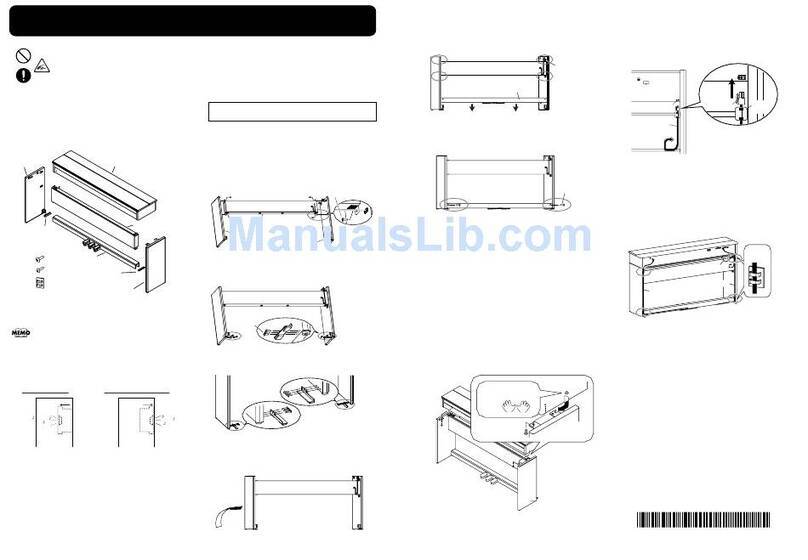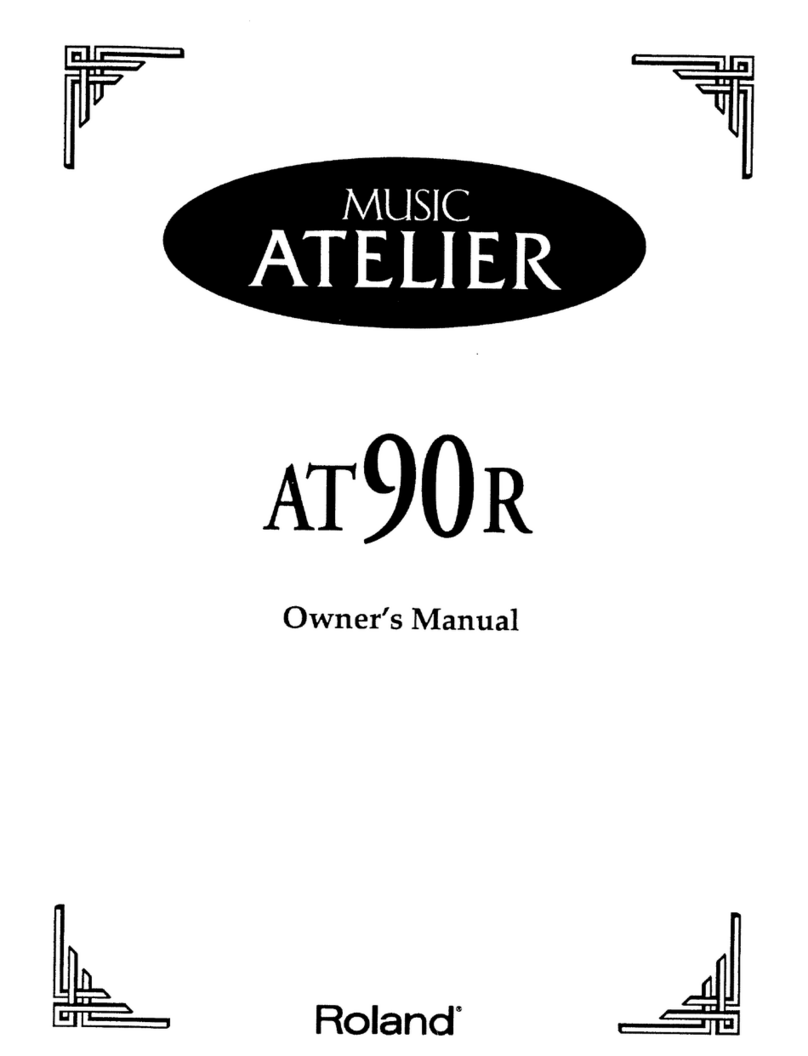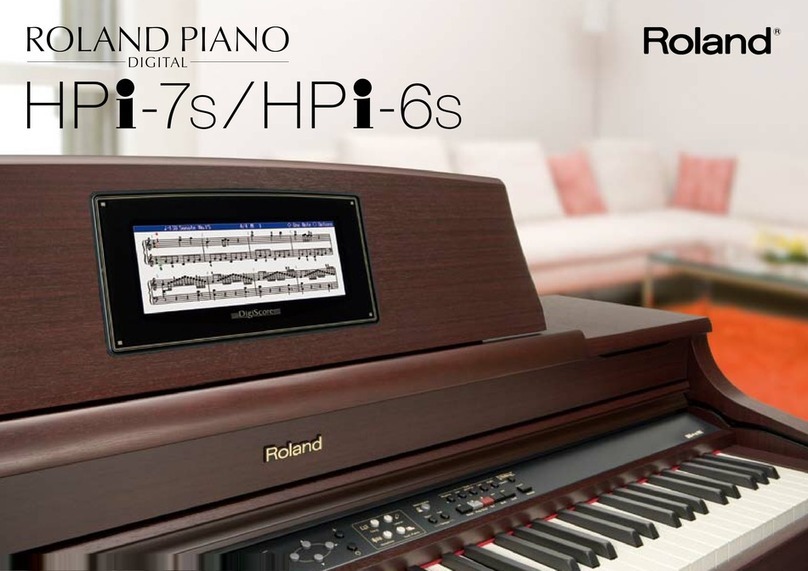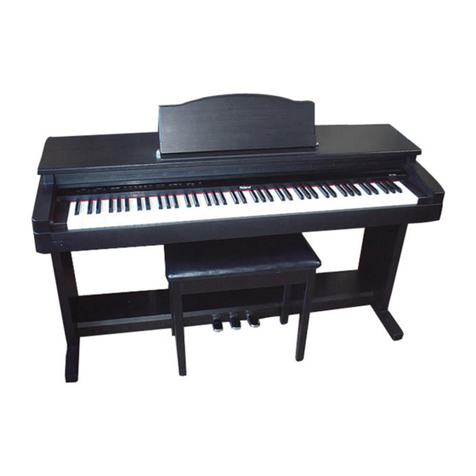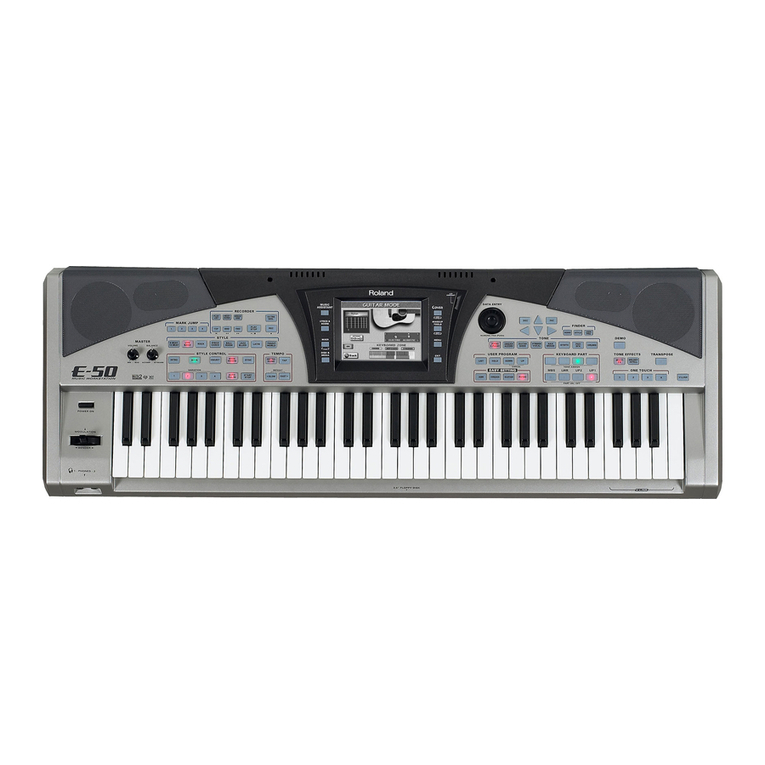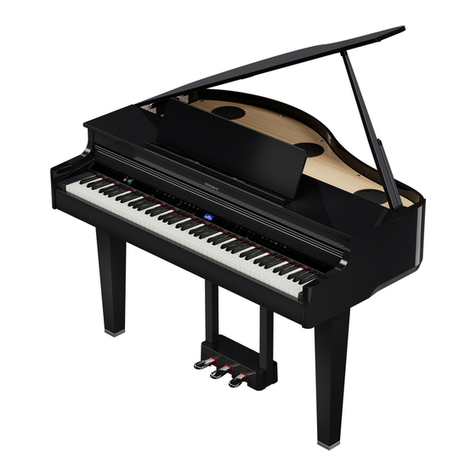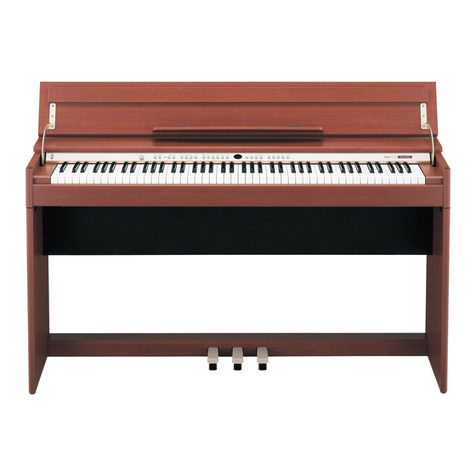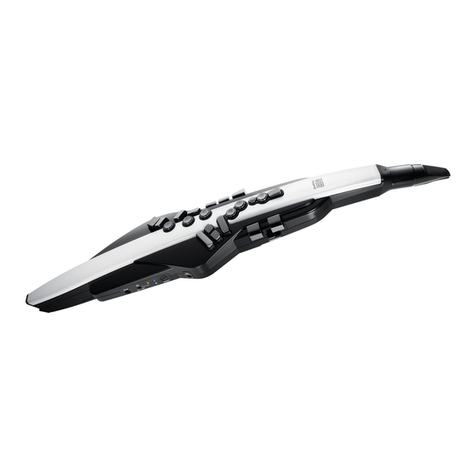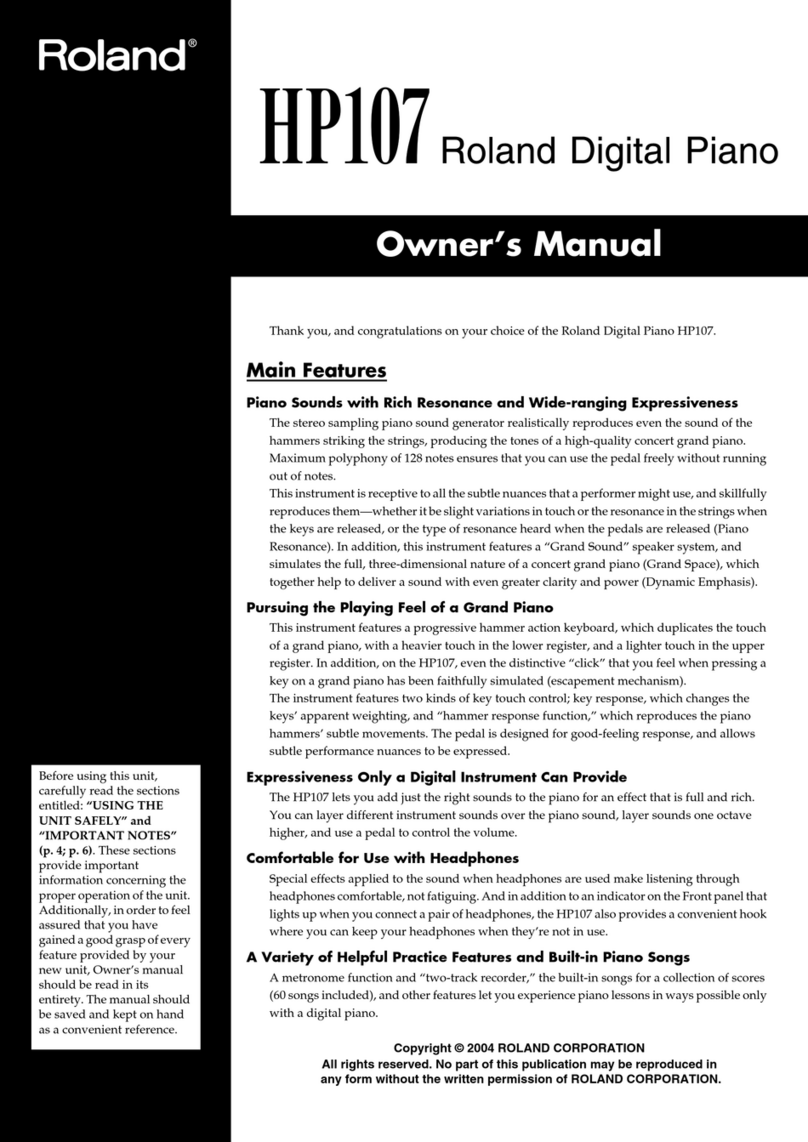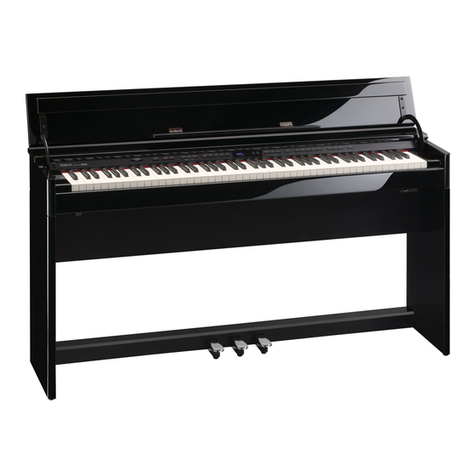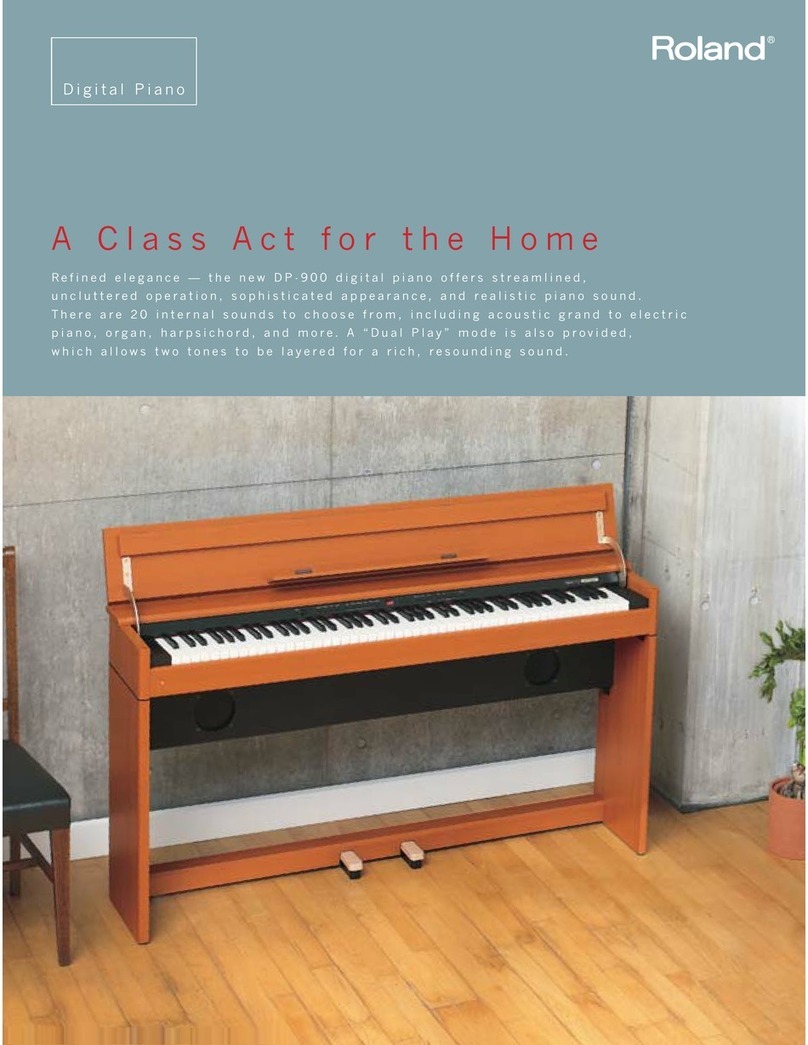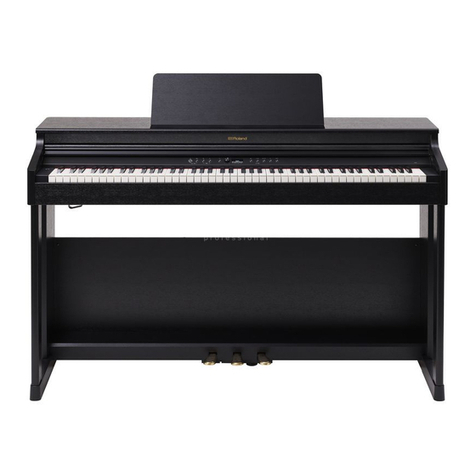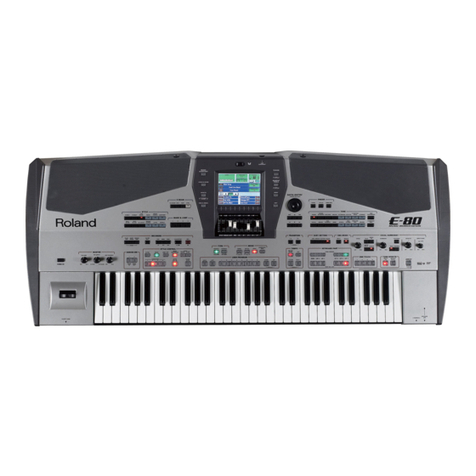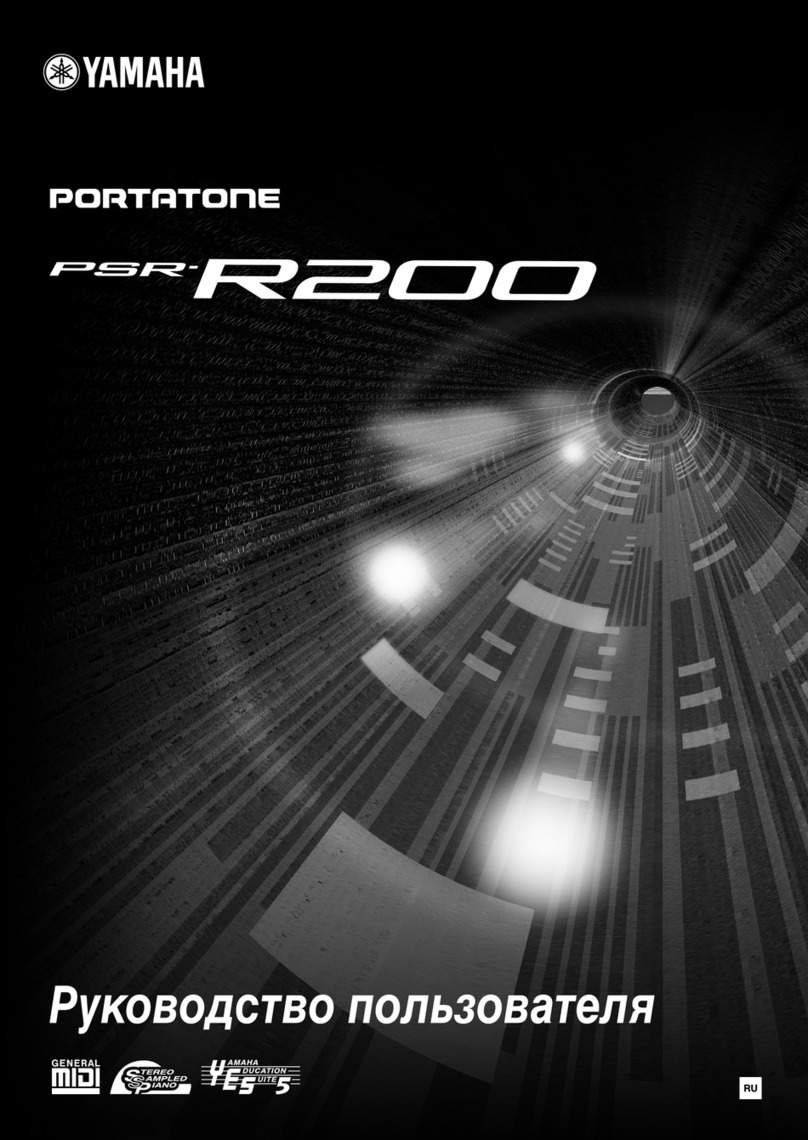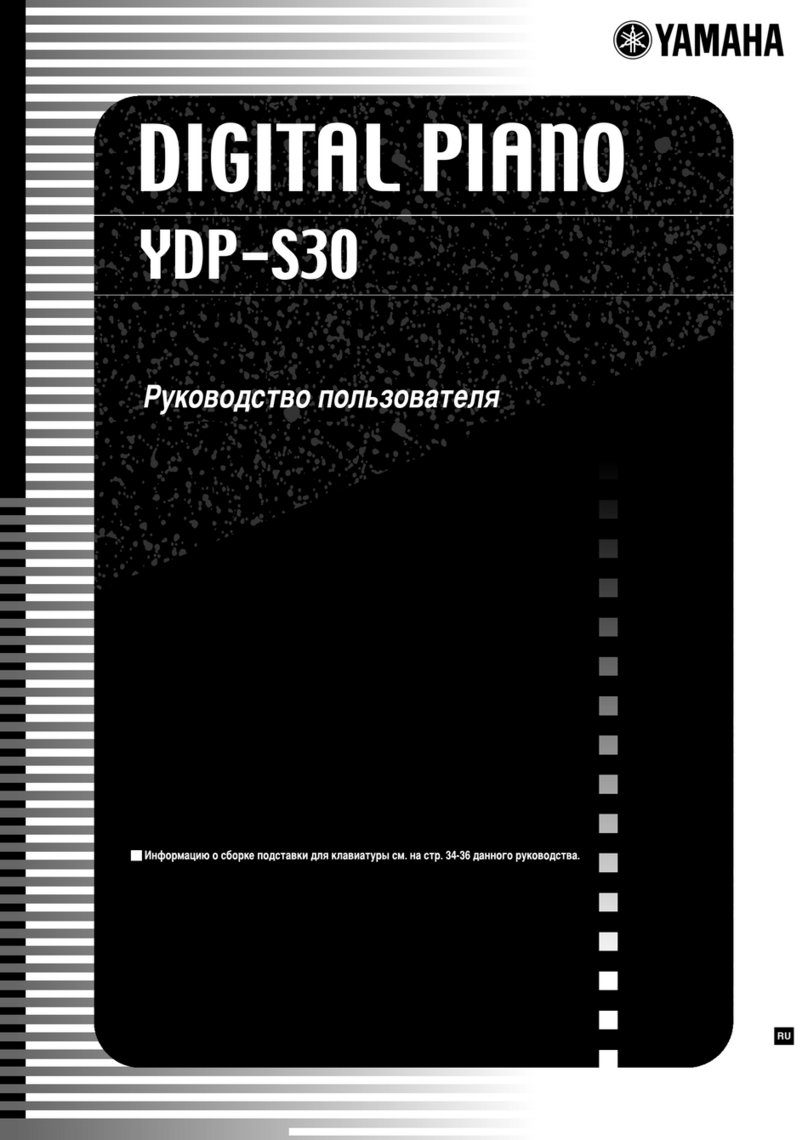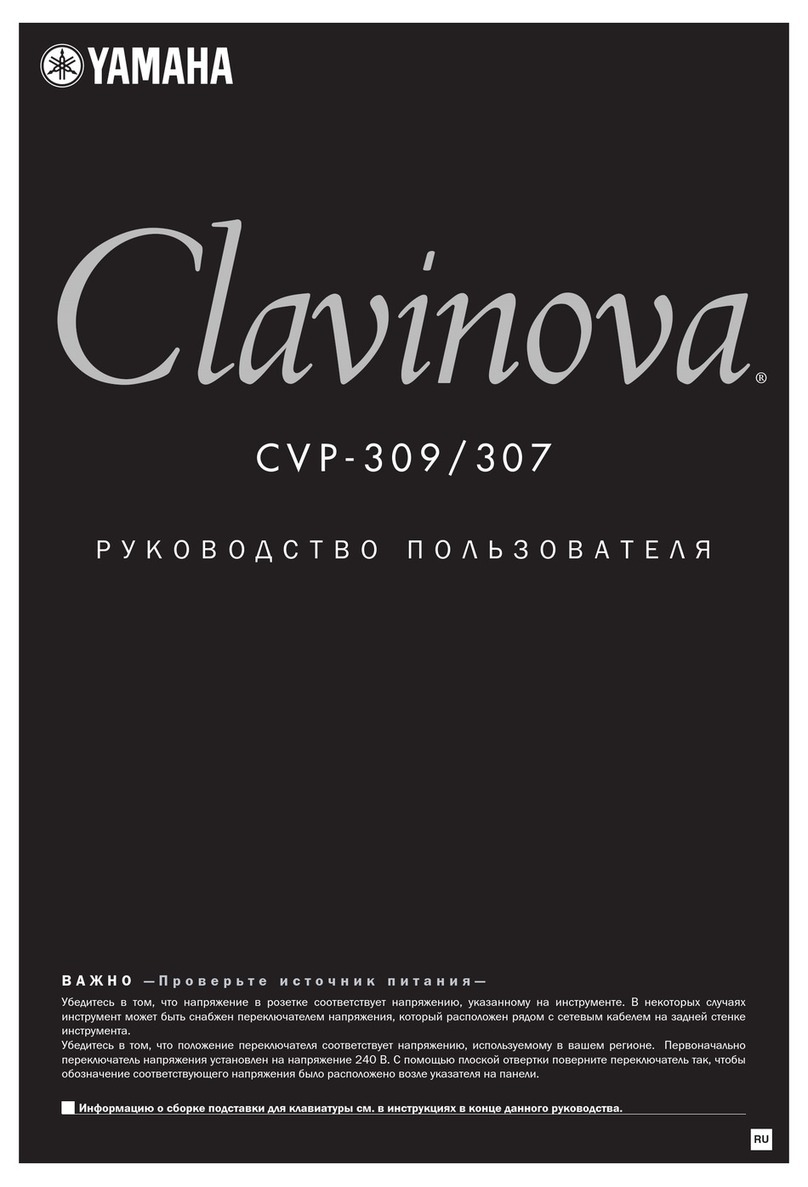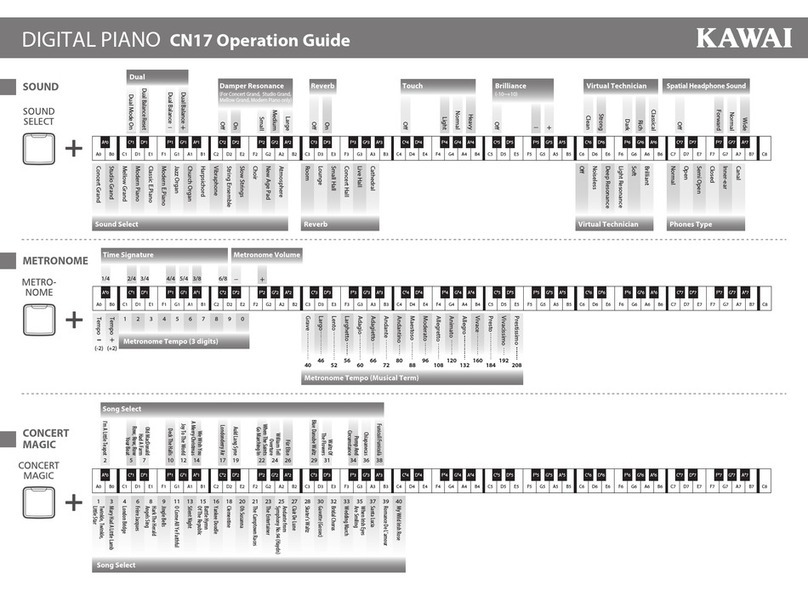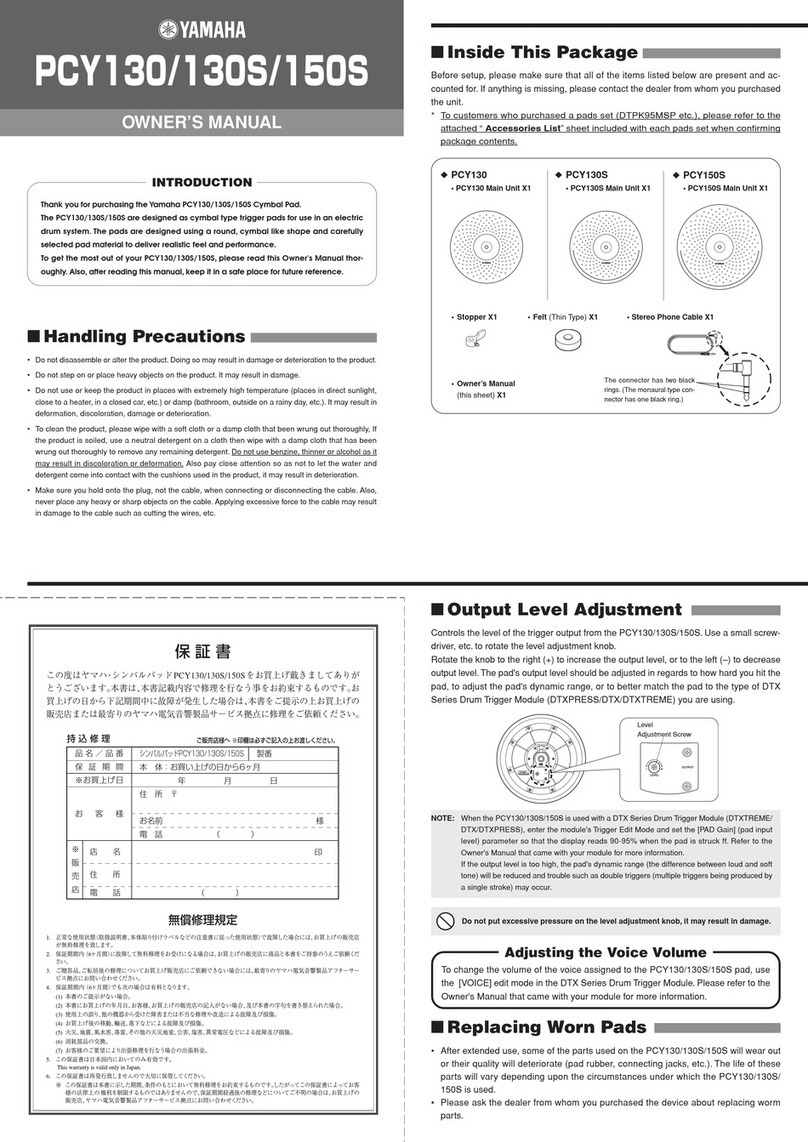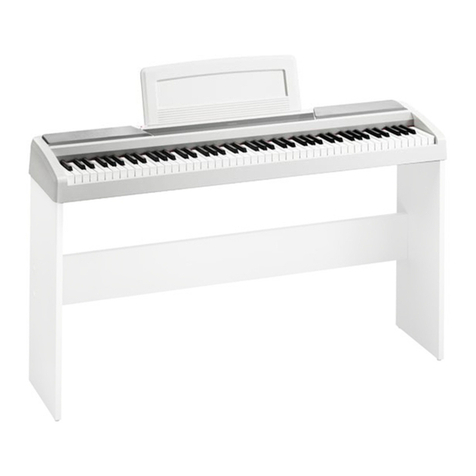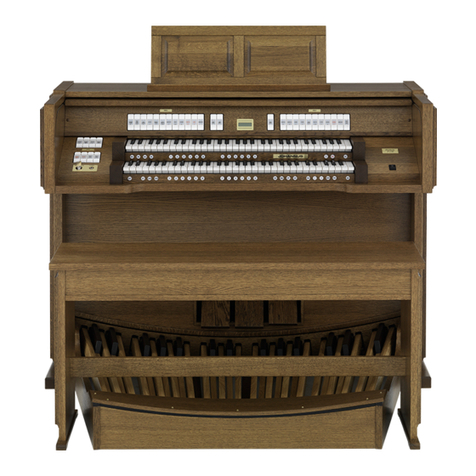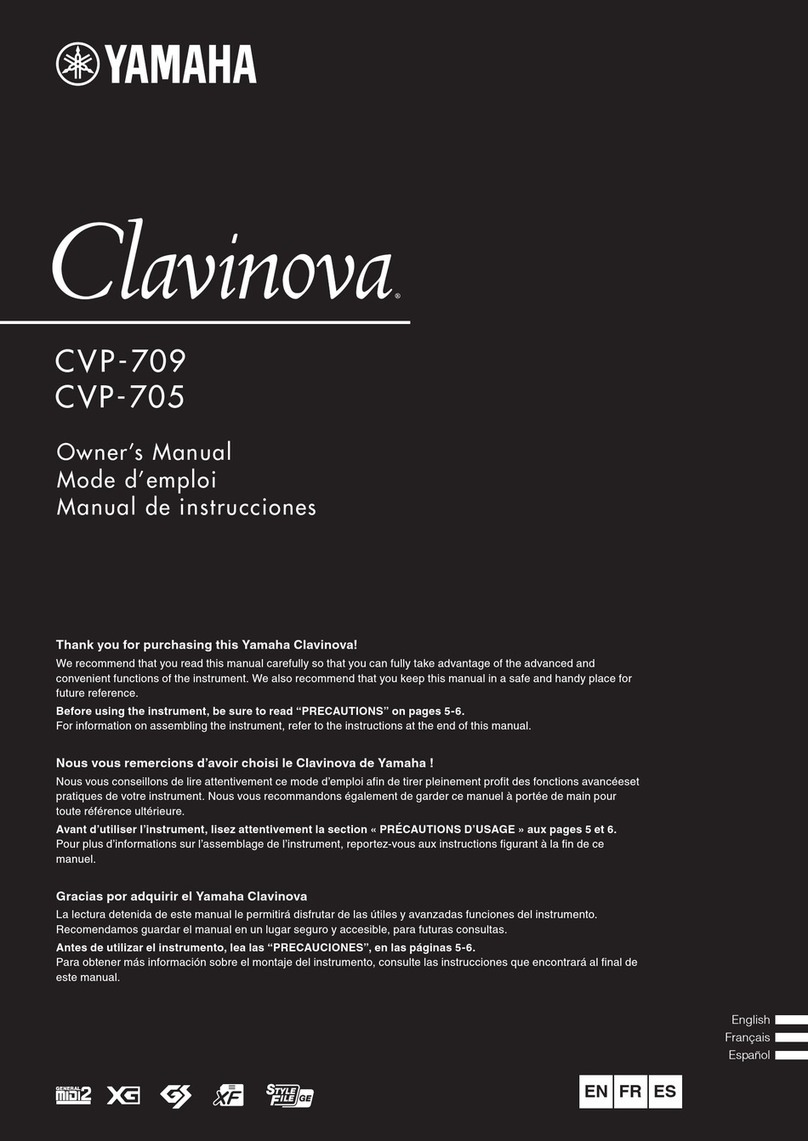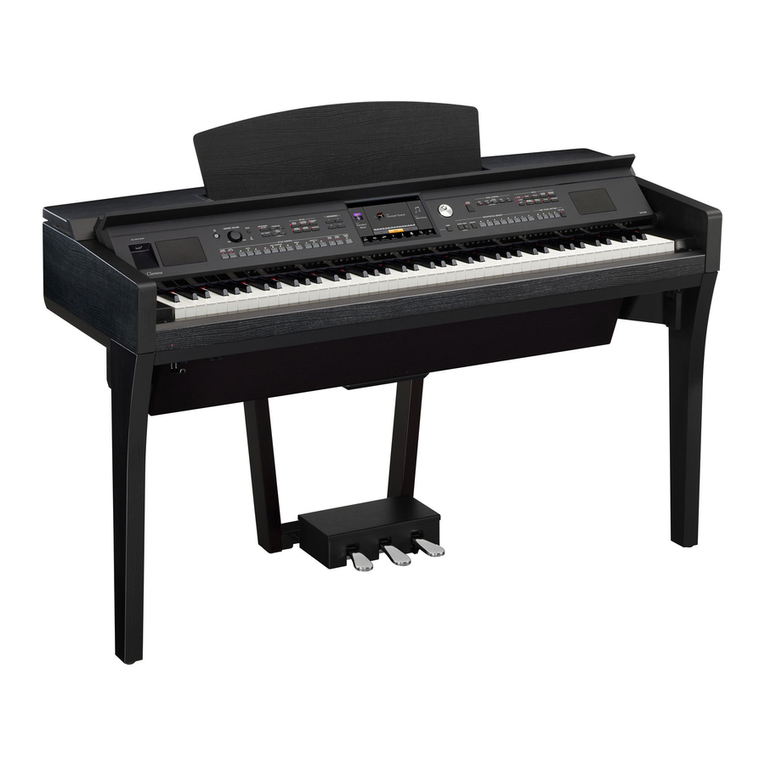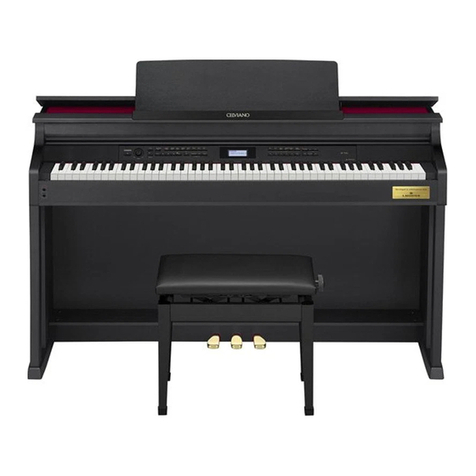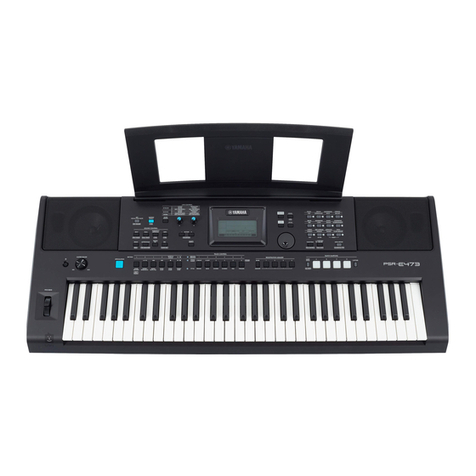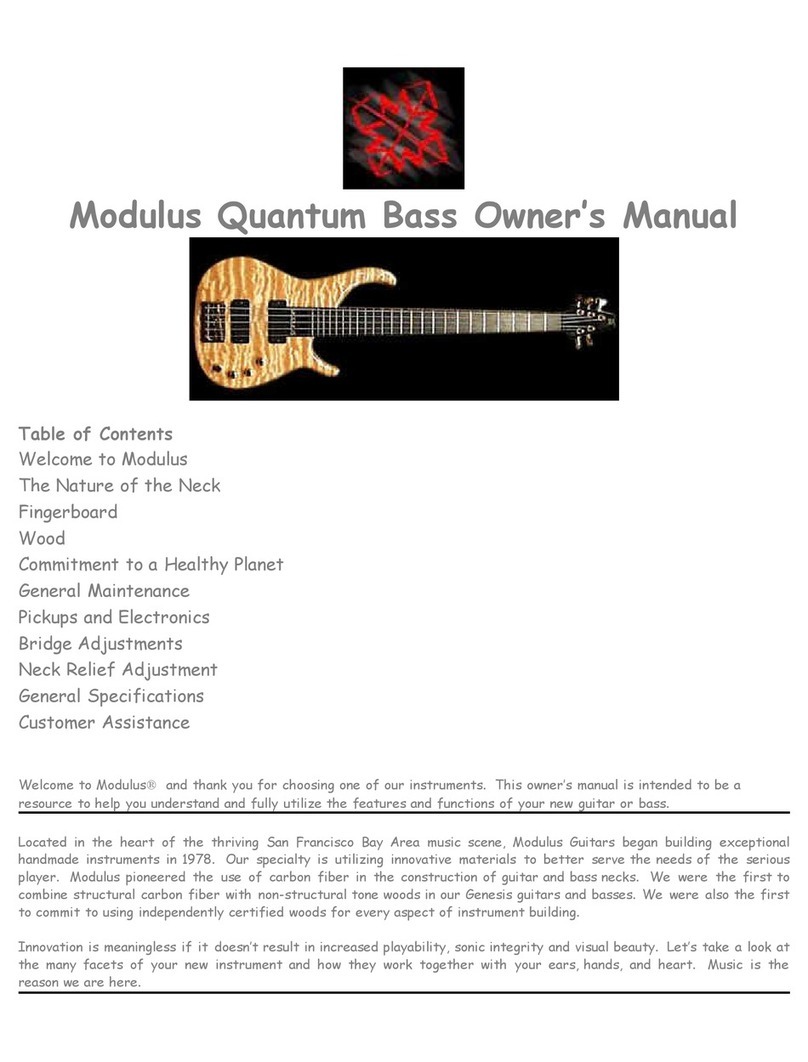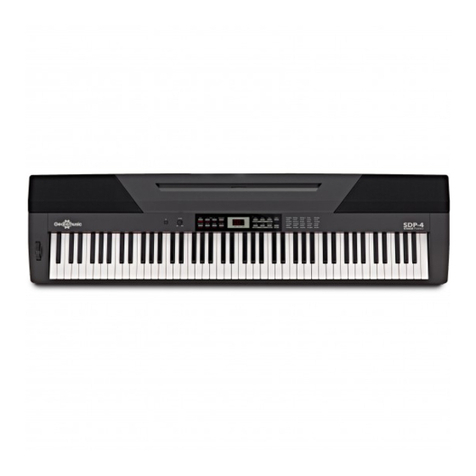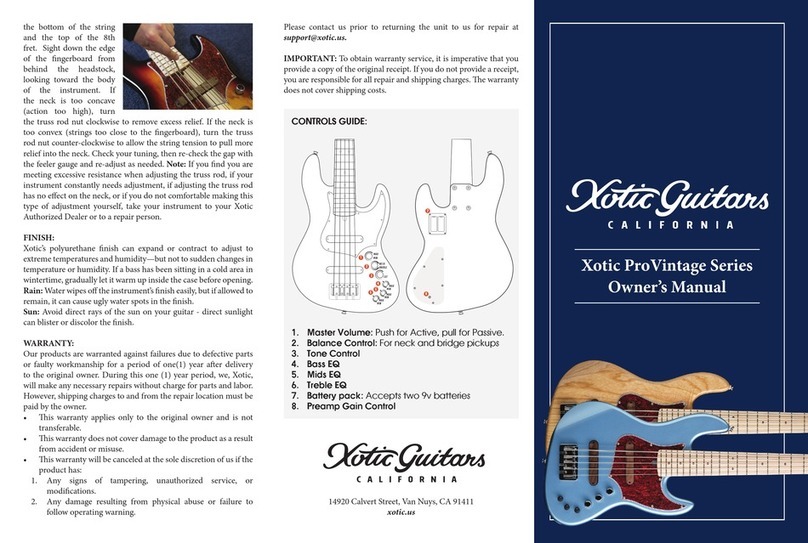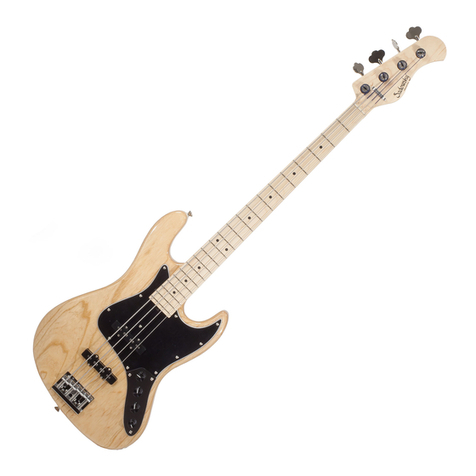
IMPORTANT NOTES
In addition to the items listed under Safety Precautions on page
2, please read and adhere to the following:
[Power Supply]
•When making any connections with other devices, always turn
off the power to all equipment first; this will help prevent
damage or malfunction.
•Do not use this unit on the same power circuit with any device
that will generate line noise, such as amotor or variable lighting
system.
[Placement]
•Do not subject the unit to temperature extremes (e.g. direct
sunlight in an enclosed vehicle). Avoid using or storingthe unit
in dusty or humid areas or areas that are subject to high
vibration levels.
•This unit may interfere with radio and television reception. Do
not use this unit in the vicinity of such receivers.
[Maintenance]
•For everyday cleaningwipetheunitwithasoft, dry cloth (or one
that has been slightly dampened with water). To remove
stubborn dirt, use amild neutral detergent. Afterwards, be sure
to wipe the unit thoroughly with asoft, dry cloth.
•Never use benzene, thinners, alcohol or solvents of any kind,
to avoid the risk of discoloration and/or deformation.
[Additional Precautions]
•Protect the unit from strong impact.
•Do not allow objects or liquids of any kind to penetrate the unit.
In the event of such an occurrence, discontinue use immedi-
ately. Contact qualified service personnel as soon as possible.
•Never strike or apply strong pressure to the display.
•Asmall amount of heat will radiate from the unit, and thus
should be considered normal.
•Before using the un it in aforeign country, consult with qualified
service personnel.
•Should amalfunction occur (or if you suspect there is a
problem) discontinue use immediately. Contact qualified
service personnel as soon as possible.
[Memory Backup]
The unit contains abattery which maintains the contents of
memory while the main power is off. The expected life of this
battery is 5years or more. However, to avoid the unexpected
loss of memory data, it is strongly recommended that you
change the battery every 5years.
Please be aware that the actual life of the battery will depend on
the physical environment (especially temperature) in which the
unit is used. When it is time to change the battery, consult with
qualified service personnel.
•The unit's battery functions during normal operation as well as
maintaining the contents of memory when the main power
supply is turned off. When the battery becomes weak, there is
arisk of losing the contents of the memory. To avoid the
unexpected loss of memory data, replace the battery before it
becomes weak.
*When the battery becomes weak, the following message will
appear in the display: "Internal Battery Low". Please change
battery as soon as possible to avoid the loss of memory data.
•Please be aware that the contents of memory may at times be
lost; when the unit is sent for repairs or when by some chance
amalfunction has occurred. Important data should be stored
on aRAM card or disk, or written down on paper. During
repairs, due care is taken to avoid the loss of data. However,
mcertain cases, (such as when circuitry related to memory itself
is out of order) we regret that it may be impossible to restore the
data.
Before Using Disks
[Handling of the drive]
•Install the unit on asolid, level surface in an area free from
vibration. If the unit must be installed at an angle, be sure that
the angle of installation falls within the tolerance range (up-
ward; 2°: downward; 18°).
•Avoid using the drive in areas of high humidity (e.g. condensa-
tion). High levels of moisture can adversely affect the operation
of the drive and/or damage disks. When the unit has been
transported, allow it to warm to room temperature before
operating.
•To insert adisk, push it firmly into the drive. To remove a disk
press the eject button firmly. Do not use excessive force to
remove a disk which is lodged in the drive.
•Thediskdrive indicator will lightwhile the drive is in operation
Never attempt to remove adisk when the indicator is lit. Doing
so may damage the disk or the data stored on it.
•Before powering up or powering down, remove any disk from
the drive.
[Handling Disks]
•Disks contain aplastic disk coated with magnetic particles.
Observe the following when handling disks:
-Never touch the magnetic surface of the disk.
-Do not subject disks to temperature extremes (e.g. direct
sunlight in an enclosed vehicle). Recommended tem-
perature range: 10 to 50 °C.
-Do not expose disks to strong magnetic fields such as
those generated by loudspeakers.
•Floppy disks contain a'write protect' switch which can protect
adisk from accidental erasure. It is recommended that the
switch be kept in the 'protect' position and moved only when
you wish to write new data onto the disk.
Rear side of the disk
Write (can write new data onto disk)
Protect (prevents writing to disk)
Write Protect Tab
•All important data should be copied onto backup disks This
provides acomplete duplicate of the data should the original
disk be lost or damaged.
•Identification labels should be firmly fixed to the disks. Should
alabel come loose while the disk is in the drive, it may be
difficult to remove the disk.
c
o
e=a
(
O
=1 ia
